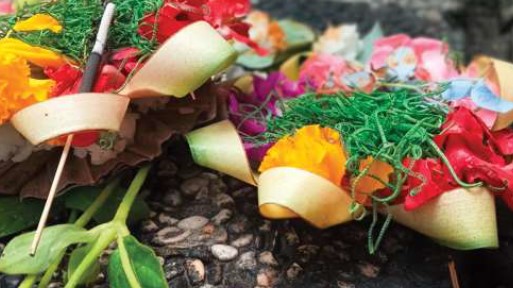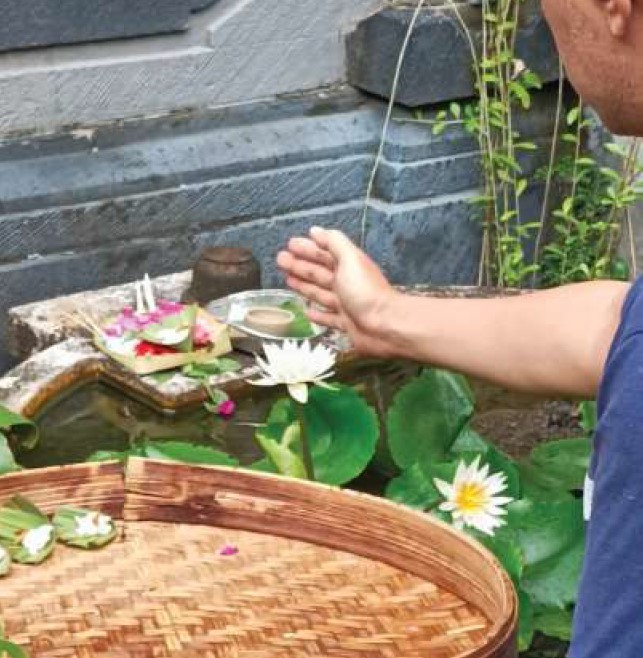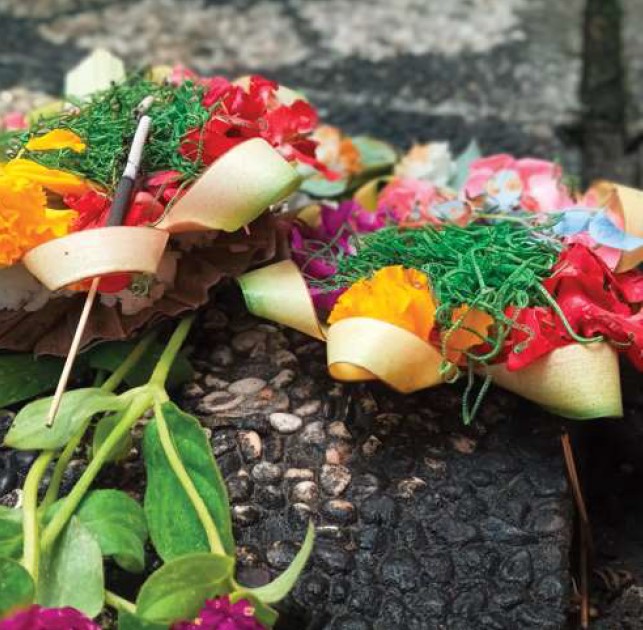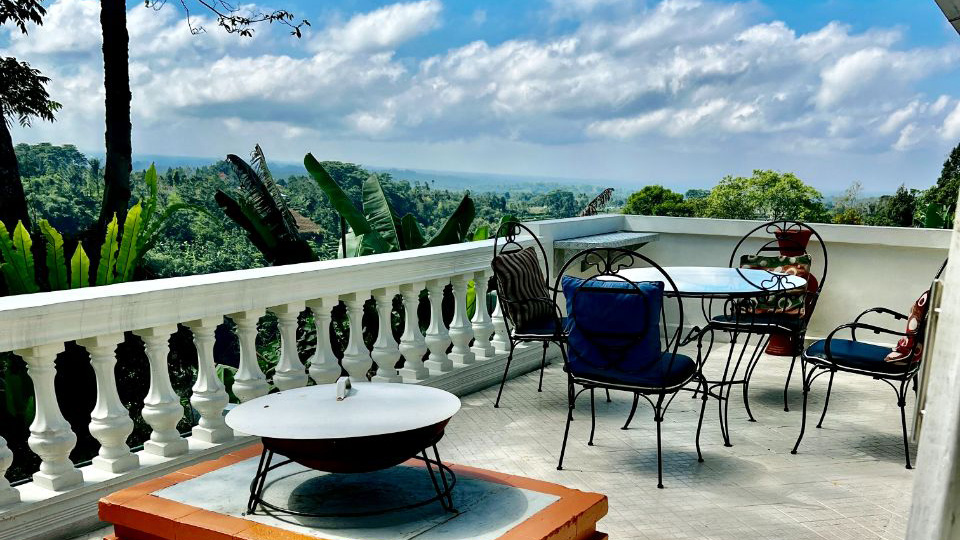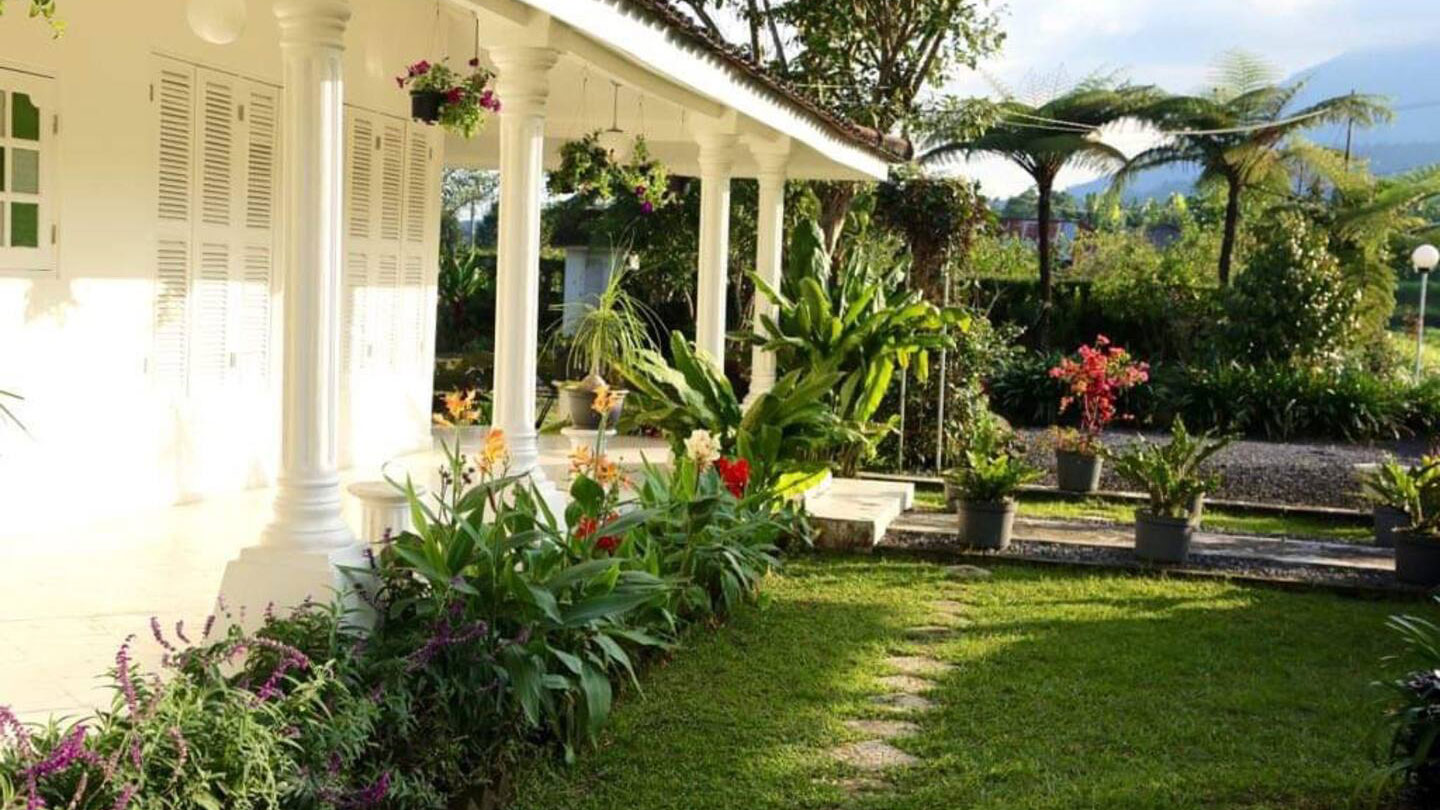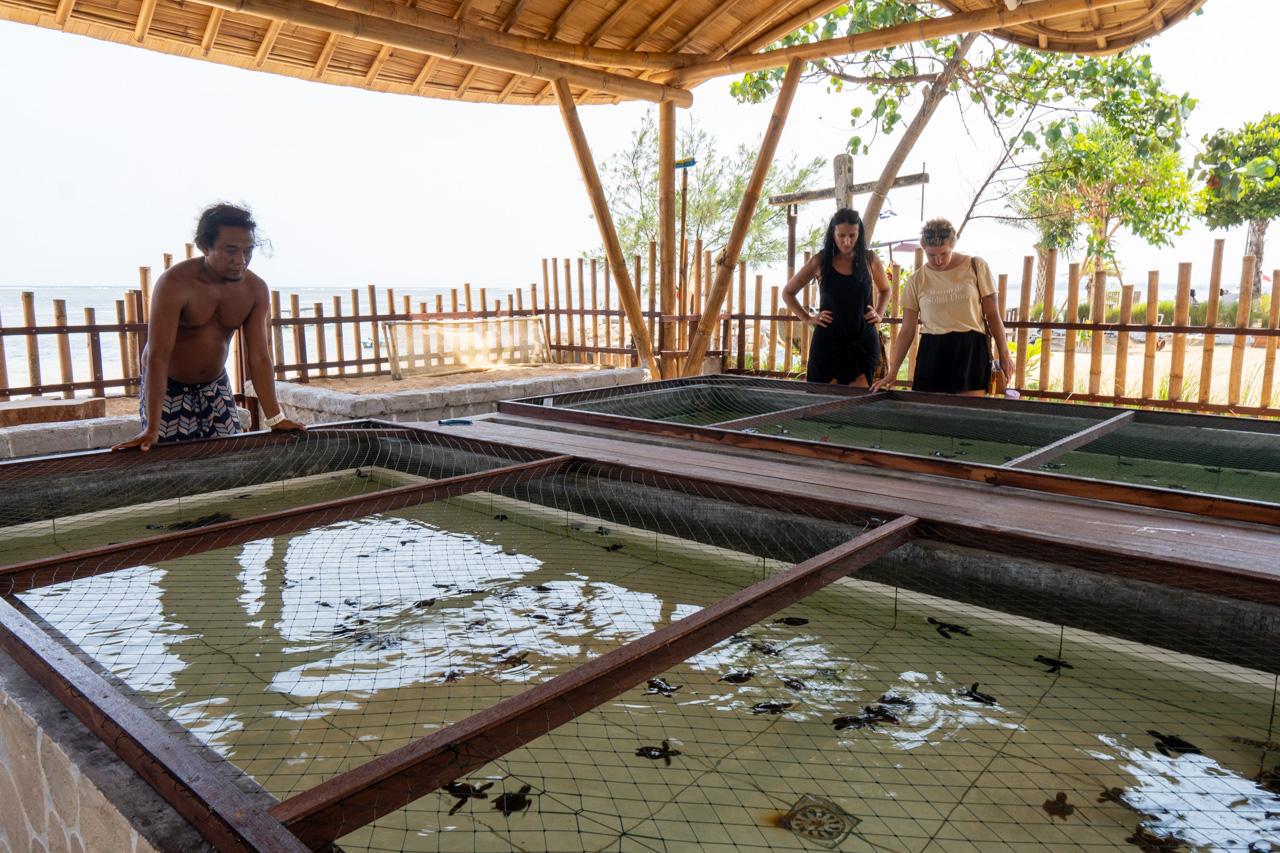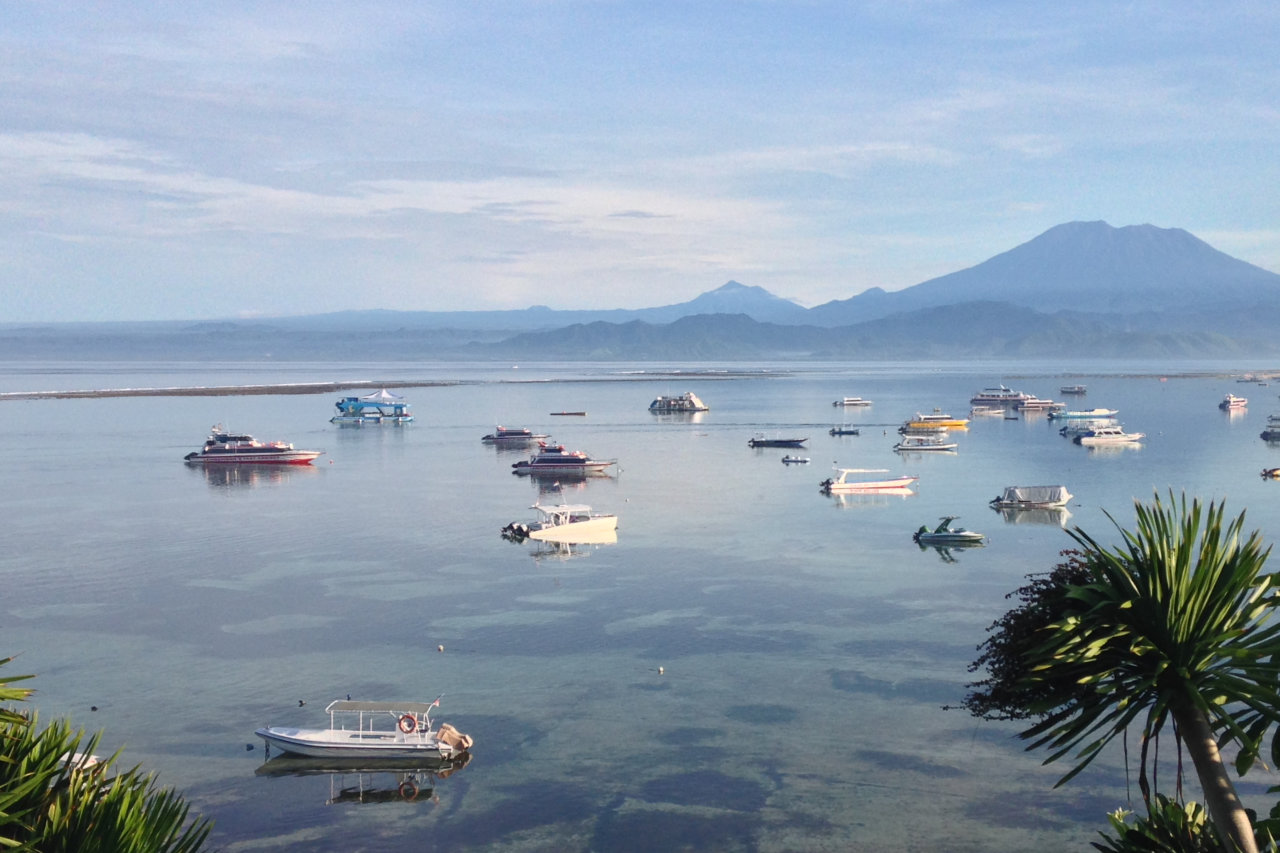Bhagavad Gita 9.26: “If one offers to Me with devotion a leaf, a flower, a fruit, or even water, I delightfully partake of that item offered with love by My devotee in pure consciousness.” – Krishna tells Arjuna what God expect and requires of an offering.
It is all about expressing gratitude, not with words, but with crafted trays filled with flowers and burning incents. Offerings in Bali are always made of natural things and object they use in everyday life. Most offerings contain just what Krishna specified – leaves, flowers, fruit, and holly water.
The simplest daily offerings are normally done by housewives upon the completion of their cooking by putting little rice, salt, and side dishes according to whatever they cook for the day on little cuts of banana leaf. These offerings are called banten saiban, and normally are placed on five different parts representing The Panca Maha Bhuta; on the ground, on the well, on the stove or fireplace, on the roof, and on the family temple. Another form of this offering can be seen in much simpler action such as putting aside a small amount of food before they start eating the serving on the plate. Or, pouring a few drops of their first cup of coffee or tea on the ground before they drink any themselves.
The second degree in complexity of daily offerings is in the form of canang sari. It is a little tray made of coconut leaves filled with flowers of various color and some green shredded pandanus leaves – sometimes with a burning incents on it. Nothing placed randomly, canang sari is deliberately crafted and is filled with meaningful objects. Every piece in the arrangement is selected for what it symbolizes. The Hindu’s Trimurti or Trinity of Brahma, Wisnu, Siwa is represented by the piece called porosan which contained gambir (uncaria) and pinang (areca nut), betel leaf, and white lime – sticked together in the form of a mini parcel.
Flower petals symbolize peace and sincerity are strategically chosen and precisely placed; white flowers facing to the East are symbols of Iswara, red flowers facing to the South are symbols of Brahma, Yellow flowers facing to the West are symbols of Mahadeva, and blue or green flowers facing to the North are symbols of Vishnu.
In some regions in Bali, we may see some old Chinese coins, or regular coins, or paper money placed as a redeemer for all the shortcomings that may exist. And some food items; cookies, crackers, or candies placed alongside the canang sari to demonstrate selflessness. Everything should be as edible as possible so that stray dogs, monkeys or other animals could also eat it.
A dash of perfumed oil completes the canang’s preparation. The next step is the sari to be wafted to God, often by lighting an incent for the smoke to carry the essence of the offering upwards. Out of respects for the Gods, Balinese wear sarong and sash whenever doing prayers and presenting the offerings. On the next day a fresh offering will come and the previous one can be removed. Hinduism is very concerned with the relationship between humanity and the environment. Whatever comes from nature, it has to be back to nature.
<< If you liked this article, you may also like our other articles >>
To chat with our marketing partner about your business, please contact The Travellist
